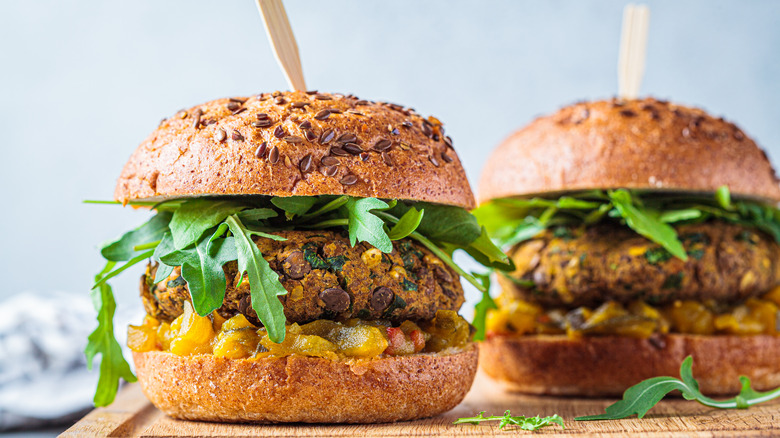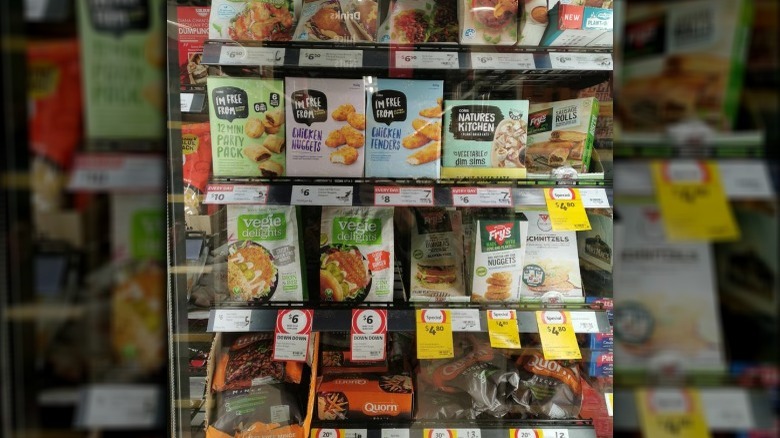Why This 'Disgusted' Vegan Claims A Store Tricked Her Into Eating Meat
Vegetable soup. Beer. Veggie burgers. Soy cheese. Refried beans. All vegan-friendly, right? Wrong. A lot of seemingly vegan-friendly foods actually contain animal products and byproducts. This is where labels come into play.
According to Business Insider, as many as one-third of Americans try to avoid products made with gluten. As such, we see a lot of food items labeled accordingly. Even though less than 1% of people will experience a strong reaction to gluten, if you're making an effort to avoid certain ingredients, it's important to carefully read labels before consuming any type of food.
So even though veganism is more often about ethics than health conditions, vegans still need to closely examine the contents of what they eat. A snack might boast vegan-friendly status, but food manufacturers can find loopholes to get you to buy their product. Due to factors like this, it's better to check the label than to be sorry later. A customer at one Australian grocery store learned this the hard way.
Labels and location can be misleading
One case of confusing labels went viral online after a customer at Coles grocery store mistook chicken products for vegan-friendly chicken substitutes. In her Twitter post, the customer claimed the products she bought were located in the vegan section of the store and accused the store of not caring about customers or the planet (via 7 News).
The products were labeled "I'm Free From," which seemingly implied that they didn't contain meat. In actuality, they were real chicken tenders that were gluten-free. A Coles representative told 7 News that this happened because the store "group[s] similar items together" (in this case, products related to dietary restrictions and alternative ingredients) so customers could logically locate them.
As LadBible notes, one commenter reminded the unhappy customer that there are more dietary restrictions out there than just veganism, and that people who can't eat gluten have to read food labels in their entirety all the time. An experience like this can feel upsetting, but avoiding such a thing is truly as simple as reading the full nutrition label rather than relying on front-of-package claims.

